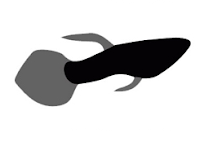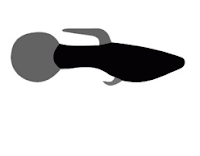Taking Care of Guppies for Beginners.

|
| How to take care of Guppies |
Hi everyone, as we all love colorful aquarium fishes. Today, I would like to talk about Guppies. They are small Ornamental fishes, which are favorite to many beginner breeders because they adapt to different environments easily and multiply quickly with little to no help. Let's start on how to take care of Guppies, and the different types of guppies present.
Guppies, as we all know are one of the known freshwater aquarium fish and generally, they are peaceful. These popular livebearers are not at all shy, and we can see them flaunting in the open areas of the tank. They vary in shape and color, there are more than 300 different types of guppies. Most of us like to keep them because they are easy to breed, least expensive, and easy to take care of.

|
| Guppy Fish |
We don't have to worry about their diet, they usually eat Pellets, Algae which is present in their tank and also insect larvae. I am a huge fan of guppy's tail (fins) and the patterns, like the way they move with their long tails. We can even produce a unique pattern (fancy guppies or stains) by choosing different color / rare guppy breeds.
Although Male guppy is smaller than the Female guppy, Just like in Peacock, the male looks very beautiful in the guppy family. Females guppies have little or no coloring in the fin areas compared to their male counterparts.
Guppy Fish Tail Shapes |
|
|---|---|

|
Fan Tail |

|
Delta/Triangle Tail |

|
Veil Tail |

|
Flag Tail |

|
Double Sword Tail |

|
Top Sword Tail |

|
Bottom Sword Tail |

|
Lyre Tail |

|
Needle/Pin Tail |

|
Spade/Coffer Tail |

|
Spear Tail |

|
Round Tail |

|
Halfmoon Tail |
Guppy Breeding Process

|
|
Female Guppy Fish |
Guppy Breeding is relatively easy, but we need to make sure that the water condition is good, and it provides proper filtration. For the breeding process, we select 1 male and 2 or 3 females for breeding. It is done in order to split the attention of male between 3 females, or else it will keep on chasing single female, and it will make the breeding stressful for the female guppy.
Guppies don't lay eggs, Pregnant guppy delivers guppy fish babies in between 21-30 days. It is a wonderful sight to see them giving birth to their offspring. Babies come out in sequential order, it takes around four to five hours for all the baby guppies to come out. Female guppy gives birth to between five to thirty babies.

|
| Guppy Breeding |
Parent guppies sometimes eat their own young ones. Some suggest separating them from their parents as soon as they are delivered. Some others recommend filling plants in a bucket, and gently put the pregnant female into the bucket. Feed the female twice a day. Change the water every other day. Keep the bucket in a shady spot.
In due time, the female should give birth, and the leaves will provide hiding places for the babies from their parents. After which you can separate the mother from little ones. Guppies are capable of growing independently without any parental care. They take around three to four months to reach maturity. Lifespan of Guppies vary, Typically it is around 2 years.

|
|
Types of Guppies |
Different type of Guppies |
|
|---|---|
| Galaxy Blue Tail Guppy | Red Lace Ribbon Guppy |
| Yellow Tiger Guppy | White Tuxedo Guppy |
| Purple Mosaic Guppy | Metal Blue Lace Guppy |
| Tuxedo Koi Guppy | HB Blue Guppy |
| Cobra Black Tail Guppy | Galaxy Red Tail Guppy |
| Red Panda Guppy | Platinum Red Guppy |
| Moscow Blue Guppy | Green Diamond Guppy |
| Albino Koi Guppy | Red Cobra Guppy |
Guppy - Malaria fighter

|
| Guppy |
Mosquitoes have been a real problem in many places, using insecticides, and installing Mosquito Mesh for homes are not enough to stop them from coming back. As a solution Guppies have been introduced to many countries as a Mosquito Control. Guppies are expected to eat mosquito larvae, which makes them popular for controlling diseases like Malaria and Dengue.
In southern parts of India, the Government introduced the Anti-Malaria movement by which guppies are released into Streams, ponds, and ditches, which are known breeding ground for mosquitoes to control the spread of Malaria.
Post a Comment